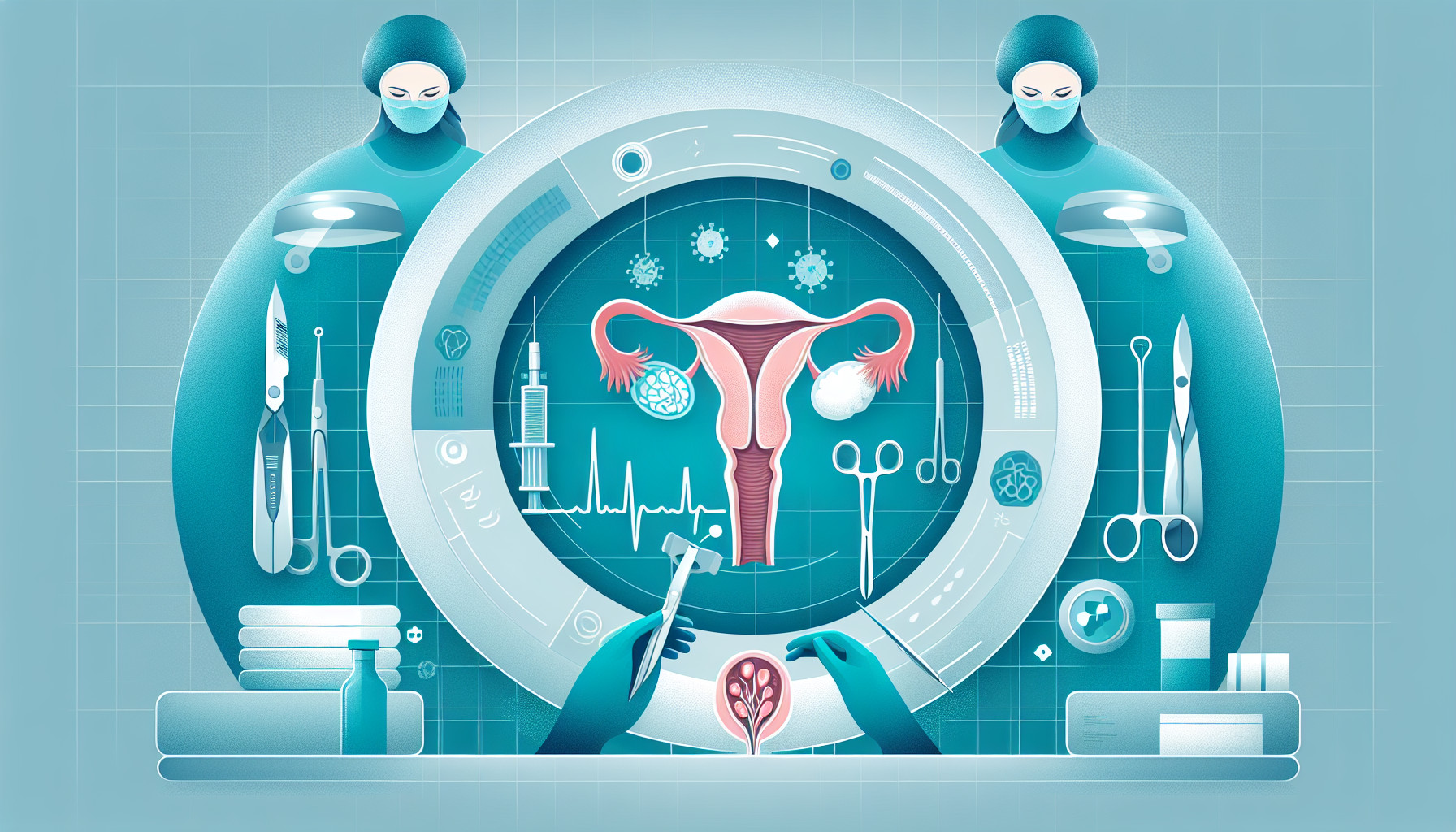Our Summary
This report talks about a new method to remove very large ovarian cysts in women who have just given birth. The method uses a single-incision laparoscopic surgery, which is a minimally invasive procedure done through one small cut instead of multiple cuts. The research suggests that performing this surgery soon after childbirth can be beneficial because the body’s natural changes after delivery may help reduce risks and improve the results of the surgery.
FAQs
- What is the single-port laparoscopic approach for giant ovarian cystectomy?
- How can postpartum single-port laparoscopic surgery benefit patients with asymptomatic giant ovarian cysts?
- What are the potential benefits of this surgery in terms of mitigating risks and enhancing surgical outcomes?
Doctor’s Tip
One helpful tip a doctor might tell a patient about ovarian cyst removal is to follow all pre-operative instructions carefully, including fasting before the procedure and stopping certain medications as advised by the doctor. It is also important to discuss any concerns or questions with the doctor before the surgery. After the procedure, following the post-operative care instructions, such as taking prescribed medications, resting, and avoiding strenuous activities, will help in a smooth recovery.
Suitable For
Patients who are typically recommended for ovarian cyst removal include those with symptomatic cysts, such as those causing severe pain, pressure, or discomfort. Additionally, patients with cysts that are suspected to be cancerous or those that are causing complications such as torsion or rupture may also be recommended for ovarian cyst removal. In the case of postpartum patients with giant ovarian cysts, timely surgical intervention may be necessary to prevent complications and improve outcomes.
Timeline
Before ovarian cyst removal:
- Patient may experience symptoms such as abdominal pain, bloating, and irregular menstruation.
- Patient may undergo imaging tests such as ultrasound or MRI to diagnose the ovarian cyst.
- Patient may receive counseling from their healthcare provider about the risks and benefits of ovarian cyst removal surgery.
- Patient may undergo preoperative testing and evaluations to ensure they are a suitable candidate for surgery.
After ovarian cyst removal:
- Patient undergoes single-port laparoscopic surgery for cyst removal, typically performed in the postpartum period.
- Physiological alterations from the postpartum period may help mitigate risks and enhance surgical outcomes.
- Patient may experience a quicker recovery time and reduced risk of complications compared to traditional laparoscopic surgery.
- Patient may have a follow-up appointment with their healthcare provider to monitor their recovery and ensure there are no complications post-surgery.
What to Ask Your Doctor
- What are the risks and benefits of removing the ovarian cyst?
- What is the expected recovery time after the surgery?
- Will I need any special follow-up care or monitoring after the cyst removal?
- How will the removal of the ovarian cyst affect my fertility?
- Are there any potential complications associated with the surgery?
- What type of anesthesia will be used during the procedure?
- Will there be any scarring or potential changes in my abdominal appearance after the surgery?
- How long will the surgery take?
- Are there any dietary or lifestyle changes I should make before or after the surgery?
- Can you explain the single-port laparoscopic approach in more detail and why it is recommended for my case?
Reference
Authors: Yang Z, Jiao J, Li M. Journal: Clin Case Rep. 2024 Oct 31;12(11):e9517. doi: 10.1002/ccr3.9517. eCollection 2024 Nov. PMID: 39493786
